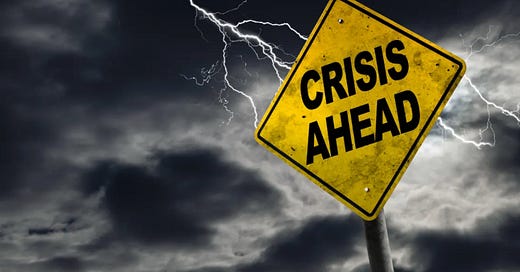Each New Crisis Narrows a Quality Investor's Investable Universe
This time: tariffs, crashing consumer confidence, higher savings rate, rising core inflation
As Q1 nears its end, this week’s auto tariff announcement and the upcoming “Liberation Day” on April 2 led to a sharp market decline yesterday. We talked about tariff uncertainty and stagflation fears three weeks ago, while addressing our buy list last weekend.
Little’s since changed, although stocks in discretionary sectors get punished as Joe Sixpack starts to feel the pinch of the past years’ inflationary pressures and today’s tariff rhetoric. Whether it’s Nike, FedEx, Lululemon, Ulta Beauty - their outlook doesn’t look rosy.
In this bi-weekly digest, we’ll take a closer look at the recent developments. In case you’ve missed our previous articles/webinars/earnings recaps/deep dives, we did share a couple of blogs:
Why a Portfolio Becomes Even More Concentrated over Time
One of the things we called out on our private Discord (and in our presentations) previously: with every crisis, the job of a quality investor becomes easier: fewer companies will make the cut. Whether it’s because of not so transparent communication (a typical major red flag), unexpected cyclicality (every recession is different), multi-year growth outlook that’s become shaky…
Meanwhile, it also forces us to think deeply about a select group of stocks, and concentrate our capital around these unique compounders. But: everyone makes mistakes, and therefore, a buy-and-hold forever approach sounds increasingly illusive.
As long as companies continue to meet our expectations, they will remain in our portfolio, which definitely resonates with the buy-and-hold mentality. It's something to aspire to, but our objective isn't necessarily to hold onto what we bought forever.
Always monitor what’s happening, as the opportunity cost of not reacting to a materially changing investment thesis grows exponentially. Put another way, don’t become attached to your individual holdings, even considering that they’ll increasingly make up a sizable portion of your entire portfolio.
With that said, let’s take a closer look at today’s environment.








